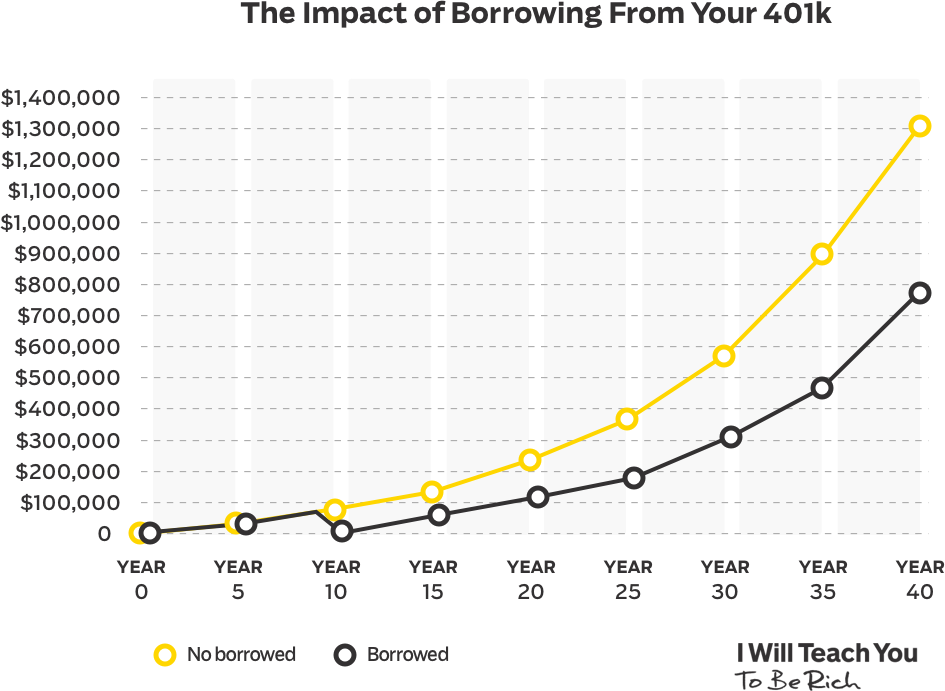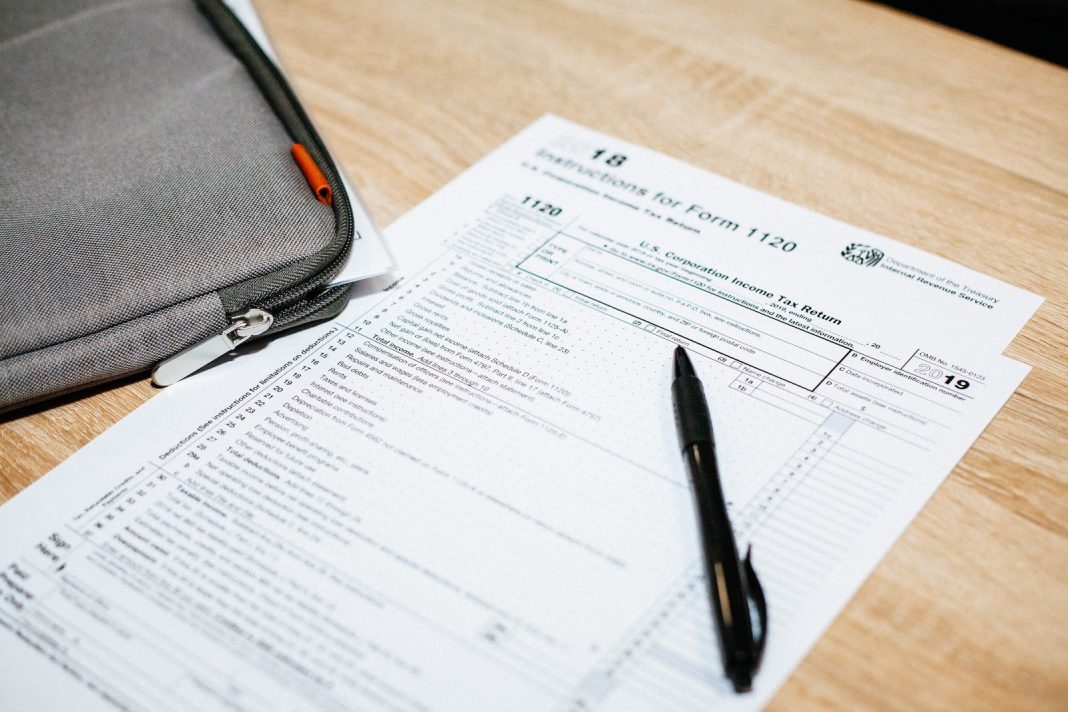A 401k is one of the most powerful investment vehicles for retirement — and it’s IWT’s favorite thing ever for several reasons:
- Pre-tax investments. You don’t get taxed on the money you contribute until you withdraw it at retirement age. This means you have more money to compound and grow.
- Free money with employer match. Most companies will match your 401k earnings up to a certain percentage. It’s basically free money!
- Automatic investing. The investments you make are taken from your paycheck automatically each month — which is a HUGE psychological benefit.
With all these awesome benefits though comes a cost: You can’t withdraw any of it until you hit the age of 59 ½.
If you do, you’ll be subject to taxes on your withdrawal as well as a 10% penalty from the federal government.
This, my friends, is the monkey’s paw. It’s the deadly consequence of King Solomon’s golden touch. It’s the deal that you must carry Madame Zeroni up the mountain or you and your family will be cursed for always and eternity.
Borrowing from your 401k shouldn’t be done lightly. In fact, you really shouldn’t do it at all since dipping into your 401k can severely slow down your retirement goals.
Instead, save it for clear cases of emergencies like medical bills, urgent car repairs, or home repairs.
While a 401k offers a lot of benefits, you need to be diligent and avoid withdrawing early — lest you suffer the consequences.
BUT there is a way to borrow money from your 401k without incurring these penalties: 401k plan loans.
What is a 401k plan loan?
A 401k plan loan is one of a few ways you can borrow money from your 401k early without incurring a penalty.
While 401k plan loans will vary depending on which plan your company offers, a few rules are constant:
- The maximum amount you can take from your 401k is 50% of the vested account amount.
- You may borrow no more than $50,000.
- If 50% of your vested account amount is less than $50,000, you can withdraw up to $10,000.
- You must repay the loan within five years.
You’re “borrowing” the money from your future self when you take a 401k loan — and your future self is going to want that money back with interest.
That’s because when you take the money out, it’s no longer compounding and accruing interest. This means you will lose the gains on any amount you borrow. The interest rate is there to compensate for the loss in gains.
Now let’s take a look at how to borrow from your 401k.
How to borrow from your 401k
Since the exact stipulations for your 401k plan loan will vary from employer to employer, you’re going to want to call the plan provider and ask them these basic questions:
- “How much interest do I have to pay?” As said before, the interest amount will vary from provider to provider. Make sure that the interest along with the principal won’t dip into your living expenses.
- “Can I pay back through payroll deductions?” Most plan providers will allow you to automatically deduct the amount you borrowed from your paycheck.
- “Can I continue to invest while my money is borrowed?” Some providers won’t allow you to invest into your 401k until you’re finished paying off what you borrowed — which might affect your decision to do so.
- “What happens if I leave my employer before the loan is paid?” Very important question. Typically, you’re on the hook for the rest of the loan balance within 60 days of leaving your job.
Once you have the questions answered and you’re sure that you want to take a loan from your 401k, applying is pretty straightforward.
You’ll likely be able to do it online via your 401k plan provider’s website or your company’s benefits portal. If this isn’t the case, you might have to contact your company’s human resources department where they’ll take care of it for you, or you’ll have to fill out some paperwork.
There are no credit checks and no crazy bureaucratic paperwork you need to fill out. You just need to have the money to borrow.
This makes it incredibly easy — and also tempting — to dip into your 401k for many financial matters. Is it worth it though?
The benefits of borrowing from your 401k
Avoid borrowing from your 401k as much as possible. A little later, I’ll give you some alternatives to doing so — but there can be a few upsides to getting a 401k loan.
First, if you’re in an emergency and require money within a few days, a 401k loan can give you access to potentially $10,000 – $50,000 (depending on how much you have).
You can take out a hardship withdrawal, which allows you to attain money from your 401k in certain cases. However, this comes with a 10% penalty and you’ll have to pay taxes on it. So a 401k loan can be an attractive option in financial emergencies like unexpected medical expenses.
Also a 401k loan can be a better alternative than turning to a bank or other creditor for a loan. Since you’re borrowing from yourself, the interest you pay back goes to you instead of a third party.
Getting a 401k plan loan is also much simpler than attaining a loan elsewhere, since there are no credit or background checks.
And if the five-year repayment time isn’t enough time for you, some 401k plans allow for an extension on the loan term if you’re using it for certain purchases such as your first home.
“But wait, don’t I lose out on gains if my money is withdrawn and not compounded?”
That’s a solid fear to have, hypothetical straw man. When your money isn’t invested, you’re not going to make gains on it — but as I stated above, that’s what the interest payments are for.
Those are the benefits of borrowing from a 401k plan — now what about its drawbacks?
The downsides of borrowing from your 401k
As we mentioned in the previous section, there’s a chance that you lose money on the compounding gains even with your repayment if your investment gains are more than your interest.
Let’s take a look at a simplified example:
Imagine there are two investors: Derek and Cindy.
Both contribute about $5,000 / year to their 401k, which experiences 8% interest growth each year.
However, in the 10th year of investing, Derek decides to borrow $50,000 for a new home. How much do you think he slowed down his savings?

Derek by retirement age: $793,185.99.
Cindy by retirement age: $1,296,318.82
Derek’s going to be behind Cindy by $503,132.83 because he borrowed from his 401k!
Guess what? If Derek quit or was fired from his job, he’d be expected to pay back the entire loan within 60 days.
And if you default on the 401k loan for any reason, the loan will be subject to income tax as well as a 10% penalty from the federal government if you’re under the age of 59 ½.
For example, if you borrowed $50,000 from your 401k and were only able to pay off $20,000 before you were let go from your job and forced to default on your loan, you’d be taxed on the entire $30,000 you owe AND be forced to pay a fee of $3,000 (since that’s 10% of the amount you owe).
On top of all that, the loan payments you make are made with after-tax money. So it won’t make the same amount of money when all is said and done.
But perhaps the biggest downside comes psychologically. Once you dip into your 401k once, you’re going to be MUCH more likely to dip into it again. Treating your 401k like it’s a regular savings account is a terrible habit to get into. Before you know it, you might be exhausting everything you have for retirement due to a slippery slope of bad financial decisions.
With the penalties and potential for lost gains, borrowing from your 401k just isn’t worth it most of the time.


